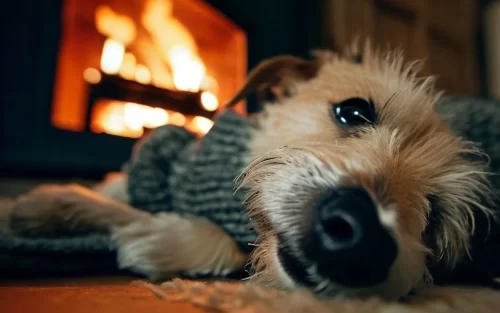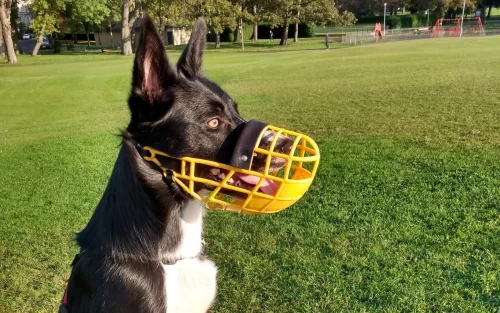Winter can be a beautiful and magical season, but it can also be challenging for our furry friends. With temperatures dropping and snow falling, it’s essential to take extra steps to keep your dog warm and comfortable during this time.
Whether you have a short-haired Chihuahua or a thick-furred Siberian Husky, you must be aware of your dog’s individual needs and take appropriate measures to ensure their well-being. In this comprehensive guide, we’ll take a closer look at the various ways you can help your dog stay cozy and safe during the winter months.
From selecting the proper winter gear to keeping your home warm and maintaining proper nutrition, we’ll cover everything you need to know to help your furry friend thrive in the cold weather.
So, whether you’re a seasoned dog owner or a first-time pup parent, join us as we explore the world of winter dog care and discover the best ways to keep your canine companion happy and healthy all season long.
Understanding Your Dog’s Cold Tolerance
Breed and size factors
Some dog breeds have a higher tolerance for cold temperatures due to their thick coats or body fat. For example, Siberian Huskies, Alaskan Malamutes, and Bernese Mountain Dogs are better equipped to handle colder climates. On the other hand, small, short-haired, or lean dogs like Chihuahuas, Greyhounds, and Whippets might struggle to maintain body heat in colder weather.
Age and health considerations
Young puppies, senior dogs, and dogs with health issues may have a more challenging time regulating their body temperature. These dogs might require extra attention and care during the winter months. Always pay close attention to your dog’s behavior and consult your veterinarian if you’re concerned about their well-being in cold weather.
Keeping Your Dog Warm Outdoors
Choosing the right winter gear
Consider investing in a warm, waterproof dog coat or sweater for dogs that need extra insulation. Look for options that provide coverage for the chest and belly and are easy to put on and take off. Remember to protect your dog’s paws with booties or paw wax to prevent ice, snow, and salt from causing irritation.
Limiting outdoor exposure
On particularly cold days, it’s best to limit the time your dog spends outside. Opt for shorter, more frequent walks, and watch for signs of discomfort, such as shivering, whining, or lifting their paws off the ground. Dry your dog off thoroughly after each walk to prevent chills.
Warming up after outdoor activities
When returning home from a walk, give your dog a chance to warm up. Provide a warm towel to dry their fur and remove any ice or snow that might have clung to their coat or paws. Be incredibly diligent in checking their paw pads and between their toes for any signs of irritation.
Creating a Cozy Indoor Environment
Choosing the right bedding
Provide your dog with a warm and comfortable sleeping area. Elevate their bed off the cold floor and add extra blankets or a heated pet pad for added warmth. Look for bedding materials that retain heat, such as fleece or sherpa, to ensure your dog stays cozy during the night.
Keeping your home warm
Maintaining a comfortable indoor temperature and keeping drafts at bay by sealing gaps around windows and doors. If you use space heaters, ensure they are pet-safe and out of your dog’s reach to avoid accidents.
Providing cozy spots around the house
In addition to their sleeping area, create cozy spots around the house where your dog can snuggle up. A soft blanket or pet bed near a sunny window or in a warm corner can provide extra warmth and comfort for your dog during the day.

Winter Nutrition and Hydration
Adjusting calorie intake
Dogs may burn more calories in colder weather to stay warm. Please consult your veterinarian about adjusting your dog’s diet to accommodate their increased energy needs. This may include increasing portion sizes, adding high-quality protein sources, or switching to a higher-calorie dog food.
Staying hydrated
Ensure your dog has access to fresh water at all times, as dehydration can still occur in cold weather. Check outdoor water bowls frequently to ensure they have yet to freeze over. You can also consider using a heated water bowl to keep your dog’s water from freezing.
Avoiding toxic substances
During winter, various substances can pose risks to your dog’s health. Antifreeze is a common hazard, as it can poison dogs if ingested. Be sure to clean up any spills and store antifreeze containers out of your dog’s reach.
Additionally, be cautious of the salt used to melt ice on sidewalks and roads, as it can cause irritation or be harmful if ingested. Opt for pet-safe ice melts when treating your own walkways.
Exercise and Mental Stimulation
Indoor playtime
When the weather is too cold for extended outdoor activities, engage your dog in indoor play and exercise. Interactive toys, puzzle feeders, and games like tug-of-war or hide-and-seek can provide physical and mental stimulation for your dog.
Training and enrichment
Winter is an excellent time to work on training and enrichment activities with your dog. Teach them new tricks or commands or enroll in a dog training class to help keep them mentally engaged.
Conclusion
As the winter season approaches, it’s essential to keep our furry friends warm and cozy. By implementing the tips discussed in this article, you can ensure your dog stays healthy, happy, and comfortable even in the chilly weather. Remember to choose the right gear, create a warm indoor environment, and provide your dog with proper nutrition.
Additionally, it’s essential to be attentive to your dog’s behavior and needs, as different dogs have different cold tolerances. So, take the time to snuggle up with your canine companion and make the most of the cozy season together.
You and your furry friend can enjoy the winter months to the fullest with a little extra care!



